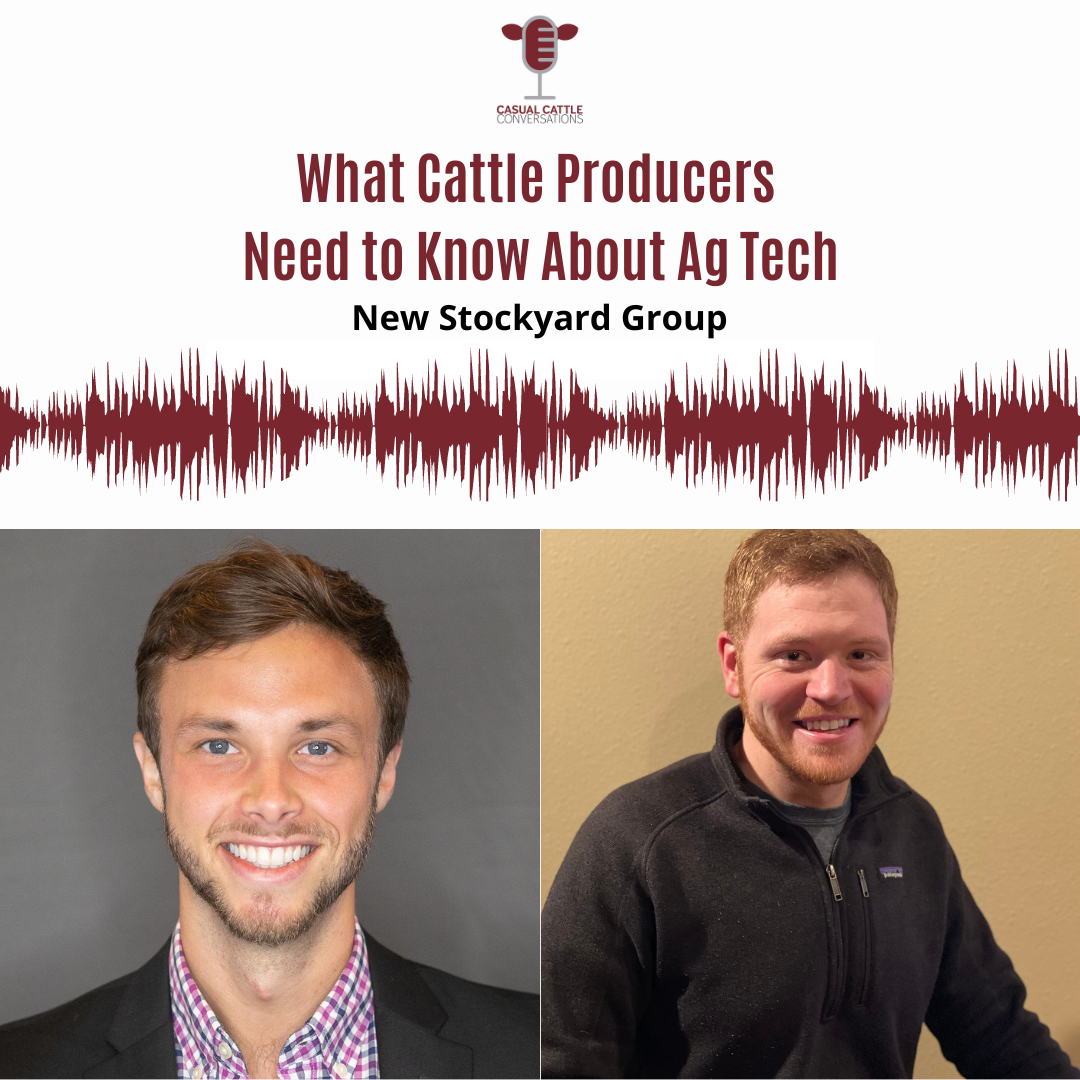What Cattle Producers Need to Know About Ag Tech

Question of the Week: Are paper records making or breaking you?
How are you keeping calving records and other herd information on your cattle operation? Do you write it down on a piece of paper, your hand or the windshield of the side-by-side?
OR…do you enter it into an app or spreadsheet right away?
There is no one-size-fits-all approach to record-keeping, but I would encourage you to think about how many steps are in your current process and how you can use technology to automate this process.
Go ahead. List out how many steps go into recording your records until you get them fully analyzed for decision-making. How much time are you spending getting to this point?
Now, you tell me…where would you rather put that time and what is a new system that can help you put this time back into your day?
What Cattle Producers Need to Know About Ag Tech
Technology and ranching go together more than one might initially expect. In fact, technology is changing how cattle producers manage and improve their herds day in and day out. Alex Heine and Keenan Hawekotte join the show from the FNBO’s New Stockyard Group, makers of the Cattle ID App, to discuss how technology helps cattle producers and what ranchers need to know about adopting these tools on their operations.
Hard-copy vs. Digital Records
There is more than one way to capture herd data. Many cattle producers rely on their pocket-sized calving books to record most of their herd’s information, but this is not the most efficient way. Every time you re-enter data into a new platform, you increase the risk of human error such as transposed numbers and use up hours of your time that could be used elsewhere. Digital record-keeping solutions are increasing in popularity for numerous reasons. The Cattle ID team shares that digital records allow for all members of a ranch to enter data in a single location, improve ranch communication and save time in the long run. All it takes is a desire to make life on the ranch easier and a willingness to learn to start implementing digital record-keeping solutions.
The ROI of Ag Tech
You may be asking, “How can I ensure that this technology pays for itself?” That’s a fair question and an important one that all cattle producers need to ask before jumping into something new. Heine encourages cattle producers to identify what information is critical to track and then look at which types of technology will best serve their team when it comes time to record and analyze this data. If you are wondering if you need the data, here’s some advice from someone in the tech world. Hawekotte shares that in today’s world, data is knowledge and knowledge is power. Cattle producers have an abundance of information they can record to not only improve their daily management practices but also create more leverage for what price they sell their cattle for. The data you collect can be used in a multitude of ways and more than return your ROI. You just need to be clear on what challenges you want and need to solve within your cattle operation.
What Ag Tech Companies want Ranchers to Know
At the end of the day, there are a few things cattle producers can remember to make the integration process smoother and technology utilization a success.
1. Provide Feedback
The people designing the application and software for you to use NEED to hear your feedback in order to make their technology more useful for you as a user. Be honest about what you like and use the most. It is also important to share what isn’t working or could be changed to make your user experience better. Don’t be shy. The 2 minutes it takes you to submit a comment or request could lead to saving you hours in the future.
2. Be Patient
New data fields, bug updates, feature changes and everything that comes with app updates have to go through multiple steps of approval and testing before they are released to the public and available to users. This doesn’t mean teams are not working on your requests. It simply means they are doing their best to release the best possible improvements at the right time. They jump through a lot of hoops so that you don’t have to.
3. Talk to Other Cattle Producers
Visit with other cattle producers to discover if they are using the same form of technology as you. Ask what they like, don’t like and think could be improved. They may have creative solutions for you to try as well. Talking about what tools and technology you use on your operation is also the best method of supporting the companies that create these products.
Now what? Dive into some of the challenges you face on your operation. Determine if these tasks can be improved or completed through automated systems like apps. Make a phone call to a company serving cattle producers and solving this problem as the first step to improving your operation.








